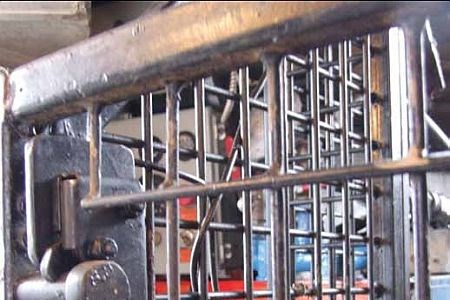A change in Quebec’s health and safety regulations may soon mean a safer environment for diamond drillers in Bradley Bros. Ltd.’s Ontario operations following the company’s successful design of a new interlock system.
A change in Quebec’s health and safety regulations may soon mean a safer environment for diamond drillers in Bradley Bros. Ltd.’s Ontario operations following the company’s successful design of a new interlock system.
“Anywhere in Canada we operate, you’re gradually going to see this system,” says Albert Bouchard, health and safety manager with Bradley Bros. Ltd.
When Quebec passed a law in 2008 mandating interlocking protectors for machines with so-called “danger zones” such as the rotating parts seen at the heart of diamond drills, Bradley Bros. Ltd. was forced to look at how to make their machines safer.
While door-sized guards are in place to keep workers safe from the internal parts which can spin up to 2,500 rotations per minute (RPMs), there were no systems in place to force the drill to shut down if those guards were lifted.
Shutting down the entire system at all times wasn’t an option as the drill’s rotation is key to attaching new rods or removing those that are stuck.
The solution was to force the drill to halt completely if the guard is opened, but still allow the drill to start afterwards in its lowest gear, even with an open guard. This means it would turn at 50-90 RPM, allowing for rods to be replaced with less danger to the helper.
After a year of brainstorming, consulting, and developing with the Quebec’s workplace safety commission, an initial prototype was produced and brought to a Vale Inco site in Sudbury. Following six months of testing, the new interlock system proved successful and has since been expanded and refined.
Because Bradley Bros. has a company-wide policy mandating that safety improvements made in one province will be applied to its drills across Canada, all its drills will gradually make the switch. This means retrofits will be necessary whether drills are turning at Xstrata Nickel’s Raglan Mine in Quebec, or with Northern Ontario firms dealing with the company’s Timmins office.
While the price tag associated with retrofitting all its 50 rigs scattered throughout Canada is a “very costly” endeavor, as a result of needing to rejig all the internal system from the electronics to the guards, Bouchard says the change is being welcomed by staff.
“Change is never easy, but they’re getting used to it, and they’re kinda looking forward to seeing through all our drills now, because it gives them more of a sense of security.”
What’s more, Bouchard says there is some talk in instituting some Quebec-style health and safety regulations in Ontario, meaning that Bradley Bros. will be “ahead of the game” should that ever occur.
Regardless of whether that comes to pass, Bouchard says such measures are gladly taken no matter what the provincially-mandated rules.
Bouchard says this kind of positive approach is part and parcel of the company’s take on health and safety, which is its number one operational priority, with the second being client satisfaction, and productivity being third.
The approach is working, he says, since 2009 marked the lowest accident frequency the company has seen in its 65-year existence, at a time where it saw some of the highest production numbers.
“It’s a team effort of course, and everyone from the people at the top to the individuals on the ground does what they can to make this happen. When everyone works together, it’s amazing what you can achieve.”
www.bradleycoredrilling.com
